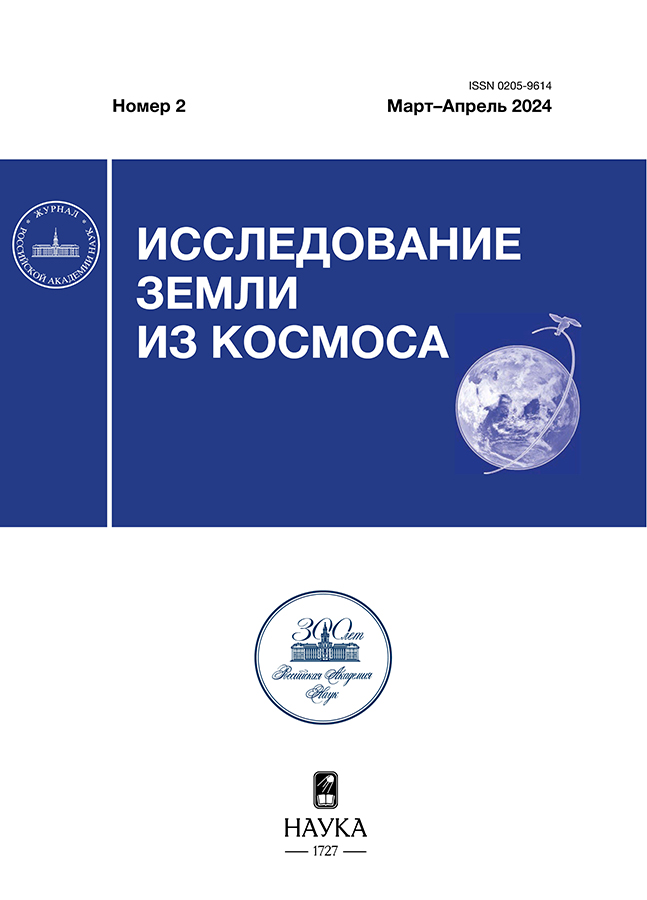Magnetic cleanliness of CubeSat 1U satellites for measuring Earth’s magnetic field
- Autores: Reva A.A.1, Bogachev S.A.1, Kirichenko A.S.1, Loboda I.P.1
-
Afiliações:
- Space Research Institute RAS
- Edição: Nº 2 (2024)
- Páginas: 80-87
- Seção: КОСМИЧЕСКИЕ АППАРАТЫ,СИСТЕМЫ И ПРОГРАММЫ ИЗК
- URL: https://journals.eco-vector.com/0205-9614/article/view/659156
- DOI: https://doi.org/10.31857/S0205961424020073
- EDN: https://elibrary.ru/FOITDS
- ID: 659156
Citar
Texto integral
Resumo
The work is devoted to the analysis of the possibility of implementing measurements of the Earth's magnetic field on board small spacecraft of the CubeSat 1U format. In particular, the problem of ensuring magnetic purity for the operation of magnetometers as part of nanosatellites was solved. The required accuracy of the equipment was estimated and the recommended maximum level of the spacecraft's residual magnetic field was determined – 0.1 nT. Ensuring the required value of the background of the magnetic field is possible only if the platform and the magnetometer are spaced apart - due to a special boom. To estimate its minimum length, the simulation of the magnetic field of the nanosatellite was carried out. The resulting value was 1250 cm.
Palavras-chave
Texto integral
Sobre autores
A. Reva
Space Research Institute RAS
Autor responsável pela correspondência
Email: kirichenko@cosmos.ru
Rússia, Moscow
S. Bogachev
Space Research Institute RAS
Email: kirichenko@cosmos.ru
Rússia, Moscow
A. Kirichenko
Space Research Institute RAS
Email: kirichenko@cosmos.ru
Rússia, Moscow
I. Loboda
Space Research Institute RAS
Email: kirichenko@cosmos.ru
Rússia, Moscow
Bibliografia
- Abramova D.Yu., Filippov S.V., Abramova L.M. About possibilities of satellite observations application to the Earth geological-tectonic structure study // Issledovanie Zemli iz kosmosa. 2020. № 2. p. 69–81. (in Russian). doi : 10.31857/S0205961420010029.
- Alpert Ya.L., Gurevich A.V., Pitaevskiy L.P. Artificial satellites in low-density plasma. Moscow : Nauka, 1964. 382 p. (in Russian).
- Kopytenko Y.A., Petrova A.A., Aleksseev V.F., Gur’ev I.S., Labetskiy P.V. Application of altitude models of Earth’s magnetic field for solving geophysical problems // Kosmicheskie issledovaniya. 2019. T. 57. № 3, P. 185–191. (in Russian). doi : 10.1134/S0023420619030063.
- Ovchinnikov M.Yu., Penkov V.I., Roldugin D.S., Ivanov D.S. Magnetic orientation systems for small spacecrafts. Moscow: IPM im. M. V. Keldysha, 2016. 366 p. (in Russian). doi: 10.20948/mono-2016-ovchinnikov.
- Balogh A. Planetary Magnetic Field Measurements: Missions and Instrumentation // Space Sci Rev. 2010. V. 152. p. 23–97. doi: 10.1007/s11214-010-9643-1.
- Behannon K.W., Acuna M.H., Burlaga L.F., Lepping R.P., Ness N.F., Neubauer F.M. Magnetic Field Experiment for Voyagers 1 and 2 // Space Science Reviews. 1977. V. 21. iss. 3. p. 235–257. doi: 10.1007/BF00211541.
- Cain J.C., Sweeney R.E. The POGO data // J. Atmos. Sol. Terr. Phys. 1973. Vol. 35. p. 1232–1247. doi: 10.1016/0021-9169(73)90021-4
- Denton M.H., Borovsky J.E., Stepanova M., Valdivia J.A. Unsolved problems of magnetospheric physics // J Geophys Res. 2016. V. 121. no. 11. p. 10783–10785. doi: 10.1002/2016JA023362.
- Glassmeier K., Boehnhardt H., Koschny D., Kührt E., Richter I. The Rosetta Mission: Flying Towards the Origin of the Solar System // Space Science Reviews. 2007. V. 128. iss. 1–4. p. 1–21. doi: 10.1007/s11214-006-9140-8.
- Hulot G., Leger J.-M., Clausen L. B.N., Deconinck F., Coïsson P., Vigneron P., Alken P., Chulliat A., Finlay Ch.C., Grayver A., Kuvschinov A., Olsen N., Thébault E., Bertrand F., Jager T., Häfner T. NanoMagSat, a 16U nanosatellite constellation high-precision magnetic project to initiate permanent low-cost monitoring of the Earth’s magnetic field and ionospheric environment // EGU General Assembly. 19–30 Apr 2021, EGU21–14660. doi: 10.5194/egusphere-egu21-14660.
- Hulot G., Finlay C.C., Constable C.G., Olsen N., Mandea M. The Magnetic Field of Planet Earth // Space Sci Rev. 2010. V. 152. p. 159–222. doi: 10.1007/s11214-010-9644-0.
- Langel R., Ousley G., Berbert J., Murphy J., Settle M. The MAGSAT mission // Geophysical Research Letters. 1982. Vol. 9. iss. 4. p. 243–245. doi: 10.1029/GL009i004p00243.
- Olsen N., Holme R., Hulot G., Sabaka T., Neubert T., Tøffner-Clausen L., Primdahl F., Jørgensen J., Leger J.-M., Barraclough D., Bloxham J., Cain J., Constable C., Golovkov V., Jackson A., Kotze P., Langlais B., Macmillan S., Mandea M., Merayo J., Newitt L., Purucker M., Risbo T., Stampe M., Thomson A., Voorhies C. Ørsted Initial Field Model // Geophysical Research Letters. 2000. V. 27. iss. 22. p. 3607–3610. doi: 10.1029/2000GL011930.
- Piessens R., de Doncker-Kapenga E., Überhuber Ch.W., Kahaner D. QUADPACK: A subroutine package for automatic integration. Springer-Verlag. ISBN978-3-540-12553-2. 1983. doi: 10.1007/978-3-642-61786-7.
- Sutcliffe P.R., Ndiitwani D.C., Luhr H., Heilig B. Studies of Geomagnetic Pulsations Using Magnetometer Data from the CHAMP Low-Earth-Orbit Satellite and Ground-Based Stations: a Review // Data Sci. J. 2011. V. 10, IAGA10-IAGA18. doi: 10.2481/dsj.IAGA-03.
- Svedhema H., Titov D.V., McCoy D., Lebreton J.-P., Barabash S., Bertauxd J.-L., Drossarte P., Formisano V., Häusler B., Korablev O., Markiewicz W.J., Nevejans D., Pätzold M., Piccioni G., Zhang T.L., Taylor F.W., Lellouch E., Koschny D., Witasse O., Eggel H., Warhaut M., Accomazzo A., Rodriguez-Canabal J., Fabrega J., Schirmann T., Clochet A., Coradini M. Venus Express – The first European mission to Venus // Planetary and Space Science. 2007. V. 55. iss. 12. p. 1636–1652. doi: 10.1016/j.pss.2007.01.013.
- ZhongYi Chu, YiAn Lei. Design theory and dynamic analysis of a deployable boom // Mechanism and Machine Theory. 2014. V. 71. p. 126–141. doi: 10.1016/j.mechmachtheory.2013.09.009.
Arquivos suplementares












